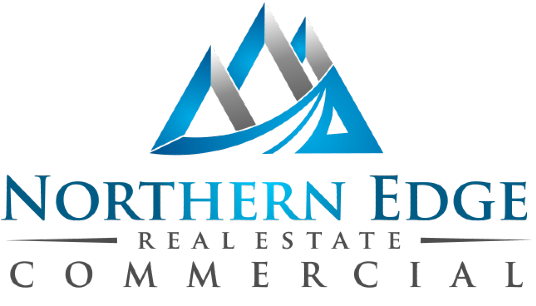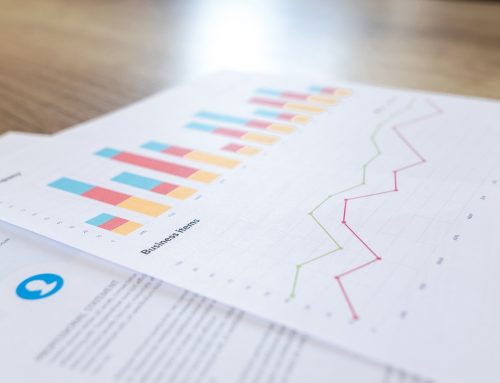
Both commercial real estate investors and professionals alike in Alaska will take a close look at an investment opportunity before they make their final decision, examining various value factors. One in particular is the CAP rate or capitalization rate. You have may have heard of it before, but what is it?
CAP rate = NOI / Asset Value
The CAP rate is an indicator of investment value calculated by weighing your net operating income (NOI) versus asset value. In its most basic form, the CAP rate is an analysis of risk for a given investment. An increased risk is marked by a higher CAP rate—in a perfect market—and inversely proportional to asset value. As you may have guessed, an investor is often willing to pay more for reduced risk, assuming all things are equal. The opposite can also be true, with risk-adverse investors seeking higher CAP rates in anticipation of higher returns.
What Does the CAP Rate Measure?
The CAP rate measures a single-period, unleveraged rate of return on a real estate investment. Commercial real estate investors tend to focus on two CAP rates in relation to their specified market: acquisition (going in) and disposition (going out). For instance, if an investor assumes they will make the investment more efficient and less risky during their time as owner, then they may assume and disposition CAP rate to be lower than their acquisition CAP rate during pro forma analysis and thus yield a higher asset value at disposition. Why? Increased efficiency should also equate to increased net operating income (NOI). When compared to average market CAP rates for their property type, higher NOI typically would imply a greater asset value.
Not all CAP rates are created equal. To avoid confusion in our analysis, we will assume an overall rate (abbreviated OAR), which is the most commonly used rate by real estate professionals and includes all aspects of the investment, including land and improvements (buildings). The OAR income capitalization rate shows the relationship between one year net operating income (NOI) and the total value of the property. This rate is highly influenced by the market. For example, any city or industry might have an average 9% OAR, while another has a 7% average OAR. Why the difference? Is one more risky than the other? It’s important to remember, real estate is a hyper-local business and differences can even be found between close submarkets in the same city. It really depends upon your data set and having enough data to make reasonable assumptions before you can truly compare risk between asset CAP rates in a defined market.
How to Use the CAP Rate
So how do you use the CAP rate? In order to use this figure as an analysis tool, investors must understand that it is a snapshot in time and while easy to calculate, CAP rates are often misinterpreted.
Below are common marketplace misuses of the CAP rate:
-
Extracting a CAP rate from current or historical income and applying it to future income
This is commonplace in analysis, but the investor must understand it is imperfect. Real estate investing is often considered a hedge against inflation due to its ability to adjust rents at or above the inflation rate. Depending on the market, whether up or down, applying one’s current income to future projections will result in either overvaluing or undervaluing the property.
-
Using different income and expense streams for comparable properties
It is important that an investor use the same method of income and expense projection used in extracting a CAP rate from the market to compare and value properties. Using different and varying income and expense extractions to deduce NOI (which is not stabilized, has no third-party management, no replacement reserves, under market operating expenses, etc) will result in varying and misleading risk profiles.
-
Dirty or clean NOI
This refers to what we include or do not include above the line when extracting NOI from our income and expense analysis to arrive at a value. What is considered dirty and clean NOI can be subjective, depending on your perspective. The most important thing to understand here is not to take the CAP rate at face value and when comparing two investments, ensure your NOI for each is “clean” and comparable.
A common example would be including or excluding capital reserves in NOI. This will have an impact on both the CAP rate and the required reserves for two comparable properties that are most likely very different. By excluding capital reserves from our calculations, we are potentially increasing risk by essentially omitting a sinking fund to cover future capital expenses. In other words, we should not compare an NOI figure with deducted reserves above the line to one with deducted reserves below the line.
Our CAP Rate Algorithm
Now, let’s talk about akCOMMERCIAL.com and our CAP rate algorithm for market comparison of potential investment properties. Using proprietary market information, we are able to aggregate and quantify an estimated expense and income profile for a given class of inventory and then apply an estimated going in CAP to active Alaska commercial real estate market opportunities. This tool is available to our subscribed members or upon request and provides a hypothesis for risk and value.
We work with our clients to validate assumptions during the pre-offer and due-diligence phases of acquisition. It is also important to understand the CAP rate is only one financial indicator used to determine potential opportunities. The CAP rate—along with other indicators such as before and after tax calculations of an Internal Rate of Return (IRR) and modified IRR—are continually refined throughout the acquisition process. By tweaking assumptions and understanding investment indicators, investors are able to analyze capital accumulation, return on investment (ROI) and yield while performing sensitivity analysis on risk.





